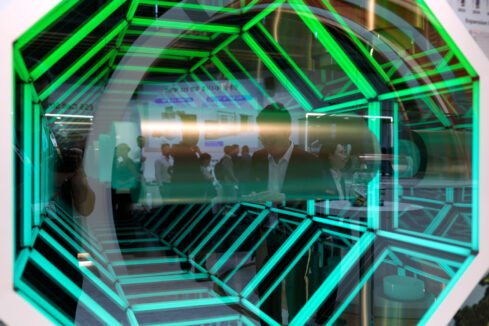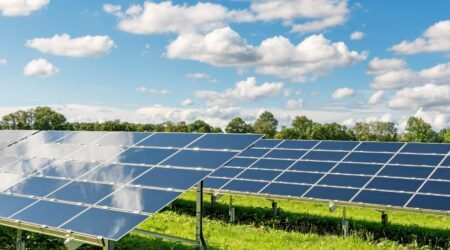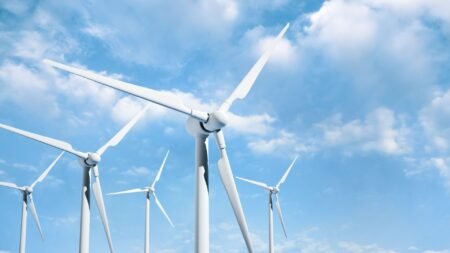Working with Chinese researchers, the Department of Energy’s Lawrence Berkeley National Laboratory (Berkeley Lab) has conducted the first comprehensive study of cool roofs in China and concluded that they would be effective in substantially reducing energy use and greenhouse gas emissions in climate zones with hot summers.
The team simulated both residential and office buildings in seven Chinese cities in five climate zones, evaluating energy use throughout the year. They also conducted short-term experiments on an office building in Chongqing and a factory in Foshan (near Guangzhou). They found that for the region of China roughly from Shanghai on south, light-colored “cool” roofs that reduce the need for air conditioning can lower annual energy cost, as well as annual emissions of CO2, NOx, and SO2. The results were recently published in a paper inEnergy Policy titled, “Cool roofs in China: Policy review, building simulations, and proof-of-concept experiments.”
“Cool roofs have been well demonstrated in the United States, Europe, and elsewhere,” said lead author and Berkeley Lab scientist Ronnen Levinson. “While the concept is the same everywhere, we wanted to show that cool roofs would also be effective for Chinese construction, in Chinese climates, and with Chinese building operation practices.”
By reflecting more sunlight, cool roofs reduce heat flow into the building, which lowers energy consumption and power-plant emissions if the building is air-conditioned. For buildings without air conditioning, the sunlight absorbed by a dark roof heats the space below, making it less comfortable. Hot, dark roofs on any building also warm the city air, aggravating what is known as the urban heat island effect. Additionally, while nearly 80 percent of the sunlight reflected from a roof can escape to outer space, the “thermal infrared” energy radiated by a hot, dark roof is trapped by greenhouse gases, such as CO2 and water vapor, warming the atmosphere.
The researchers found that increasing the albedo, or solar reflectance, of roofs to 0.6 from 0.2—for example, upgrading to an aged white roof from an aged gray roofin four cities with hot summers (Chongqing, Shanghai, Wuhan, and Guangzhou) saves U.S. $0.16 to $0.49 per square meter of roof in the annual energy cost of an office building. For residential buildings, the annual energy cost savings per square meter of roof ranged from $0.07 to $0.33. Residential cost savings are smaller mostly because residential electricity prices are lower.
Annual reductions in emissions of CO2, the principal climate-warming gas released by burning fossil fuels, ranged from 1.1 to 3.4 kilograms per square meter of roof in the four warmer cities. A small office building in Guangzhou with a 1,500-square meter cool roof would save 5 metric tons of CO2 each year, about the same as taking a car off the road for the year. Annual savings in emissions of NOx and SO2, two pollutants associated with major health concerns, ranged from 2.9 to 13 grams of NOx per square meter of roof, and from 5.4 to 33 grams of SO2 per square meter of roof.
In the office building experiment in Chongqing, the researchers found that a white roof reduced air conditioning use on a summer day by 9 percent. For the factory in Foshan, which did not have air conditioning, summer measurements showed that the cool roof reduced the indoor air temperature by 1 to 3 degrees Celsius, and also reduced roof heat flow into the building by two-thirds.
For colder cities in northern China, such as Harbin, Changchun, and Beijing, the study does not recommend cool roofs because the winter heating penalty exceeds the summer cooling savings. But for the other cities studied, “there should be either credits or requirements for cool roofs in building energy efficiency standards for all hot summer climates in China,” Levinson recommended.
He noted that the energy savings were similar to what cool roofs would yield in the U.S., but said there are other differences between the two countries. For one thing, buildings in Chinese cities tend to be much taller, making cool walls an important factor for energy efficient buildings. “In China there’s more wall area than roof area per person,” Levinson said. Also, “roofs get more sunlight per unit area, but walls have less insulation, so a cool wall can be as effective as a cool roof.”
Another difference is that a larger fraction of China’s electricity comes from burning coal, which is more polluting. “Saving a unit of electricity in China has even greater benefit than in the U.S. because they emit more pollution per kilowatt hour,” he said.
Lastly, air pollution is a factor: pollutants (as well as clouds) reduce the amount of sunlight that reaches a building, lessening the advantages of cool surfaces. “But it also means that as China takes steps to improve its air quality, the benefits of cool surfaces will increase because there will be more sunlight striking the building,” Levinson said.
To follow up, the researchers are starting year-round experiments to compare black, white, and garden rooftops in two Chinese cities. Berkeley Lab is also helping Chinese researchers establish a natural exposure testing program that will rate the reflectance of roofing materials as they soil and weather. These tests will take place in nine Chinese cities.
Co-authors of the paper included Berkeley Lab researchers Tengfang (Tim) Xu and Jing (Jane) Ge, and researchers from Chongqing University and the Guangdong Provincial Academy of Building Research. The team worked under the auspices of the U.S.-China Clean Energy Research Center Building Energy Efficiency (CERC-BEE) Consortium, which is led in the U.S. by Berkeley Lab. Additional funding was provided by the DOE’s Office of Energy Efficiency and Renewable Energy.
Source: Lawrence Berkeley National Laboratory addresses the world’s most urgent scientific challenges by advancing sustainable energy, protecting human health, creating new materials, and revealing the origin and fate of the universe. Founded in 1931, Berkeley Lab’s scientific expertise has been recognized with 13 Nobel prizes. The University of California manages Berkeley Lab for the U.S. Department of Energy’s Office of Science. For more, visit www.lbl.gov.
Share your industry press now!
Are you a PR agency or sustainability-focused organization? Join the World of Renewables network FREE today and gain exclusive access to our platform to promote your business, share the latest industry news, and connect with a global audience of 700,000+ renewable energy professionals.
Register Now to start posting your updates and showcase your expertise to a highly engaged, environmentally-conscious community.
Find out more about our Content Partnership Programs.*2024 AWARD WINNER* Websites & Mobile Sites, Webby Winner, Peoples Voice 2024





















